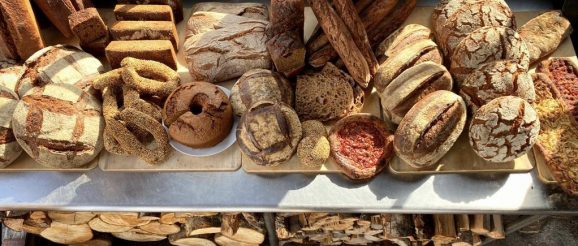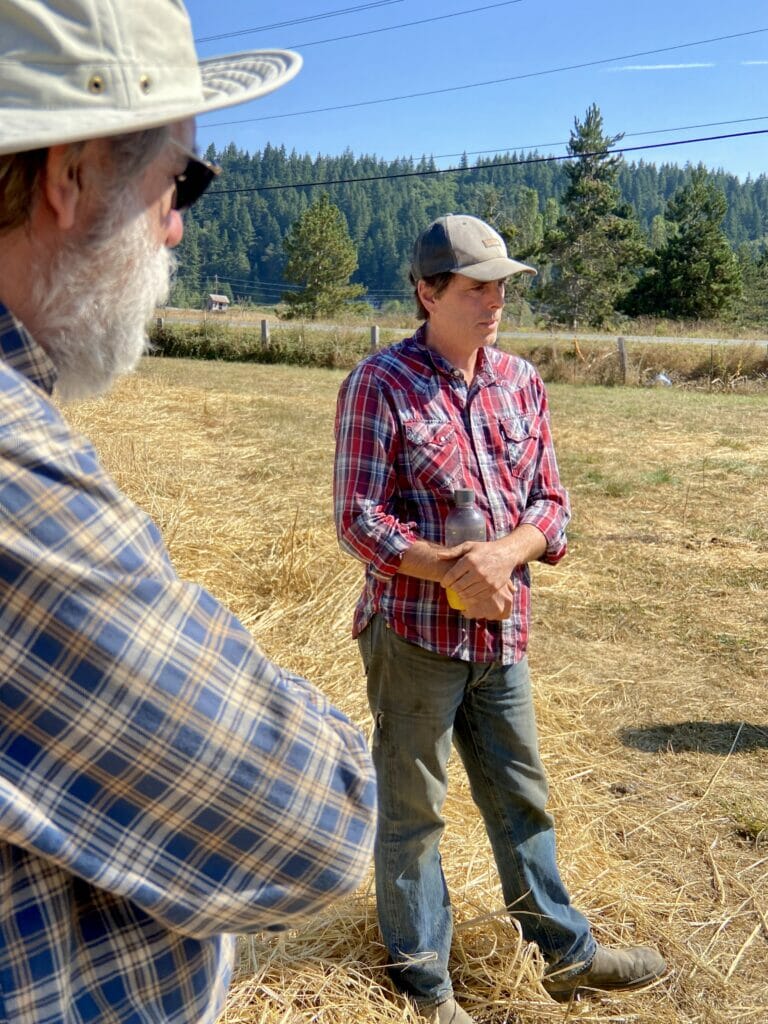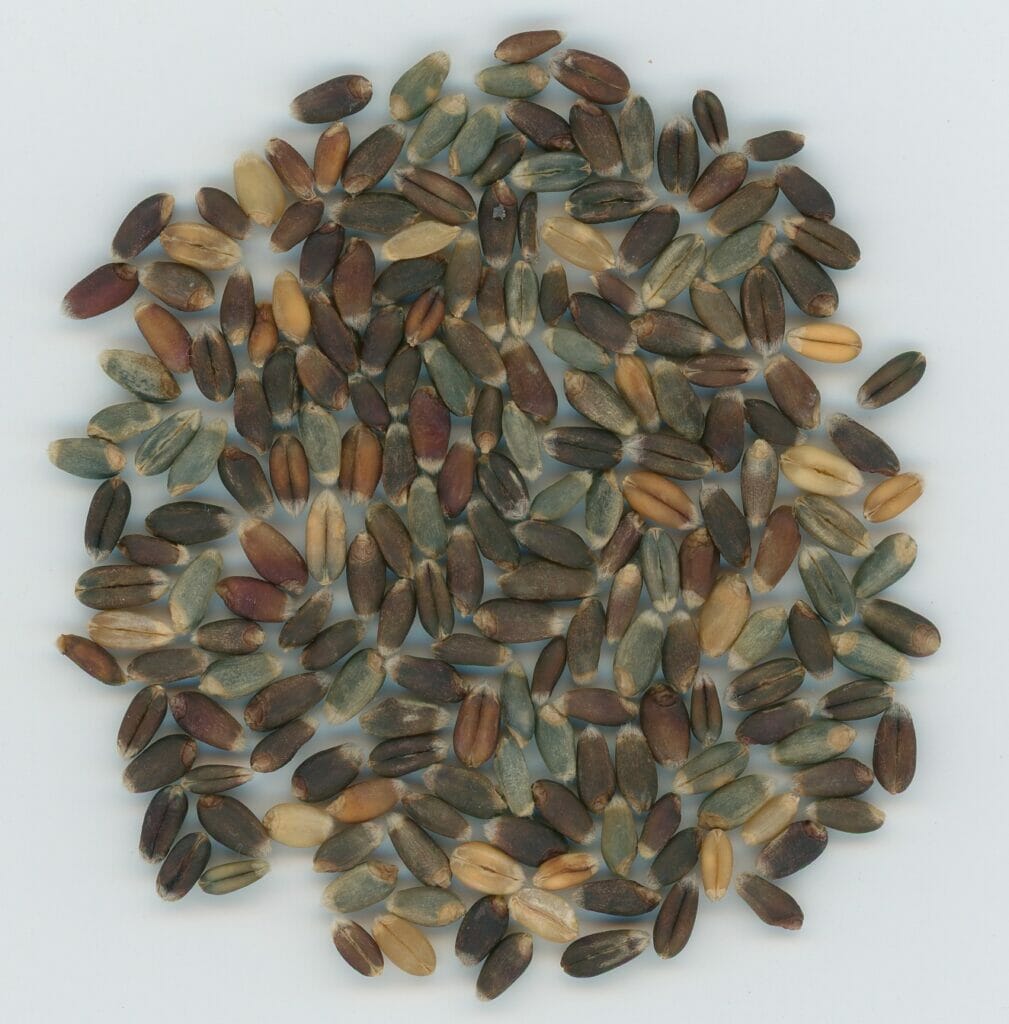A New Wave of Grain Innovation Rises in the Pacific Northwest

Grain has almost always been a central fixture in Keith Kisler’s life. Coming from four generations of eastern Washington wheat farmers, his childhood was embellished with regular trips on the tractor, weaving through fields of wheat and helping during harvests. Days were often topped off with freshly baked bread made by his grandmother, Eileen.
“I always felt I would grow grain, wherever I was. And I wanted to do things sustainably,” he says. “The more food we can provide locally is always a good thing to help buffer the larger political and environmental movement and conditions around the world.”
Since 2004, Kisler has co-owned and operated Finnriver Farm and Grainery in Washington’s Chimacum Valley with his wife Crystie Kidler. On about 40 acres, the couple grows organic spelt, common wheat, perennial wheat, barley, rye, quinoa and buckwheat. But Kisler reaching his goal to contribute to a sustainable and strong regional food system has largely been possible due to a partnership with Washington State University’s Breadlab, which has lasted more than a decade.
Founded in 2011 by plant breeder and geneticist Stephen Jones, the facility is the only one of its kind in the country. The Breadlab works with farmers, millers, bakers and distillers to develop, test and integrate new grains into their regional food systems.

Grain farmer Keith Kisler. Photo courtesy of WSU Breadlab.
Farmers such as Kisler grow out and trial hundreds of whole grain varieties that have been bred in an effort to improve certain traits, such as taste, nutrition, color, yield and hardiness.
One variety to come out of the lab recently is called Salish Blue, a perennial grain, meaning it will grow back on its own for several seasons and farmers won’t have to till and replant it every year. This is a big deal, as most grains are annual plants. Salish Blue’s roots also aid in water filtration and help prevent erosion. Another well-known creation is the Skagit 1109, a hard red winter wheat prized for its high yield and ability to survive cold, wet winters and resist disease.
Historically, the lab’s work has focused on what grows in the Skagit Valley and surrounding regions, but the lab is slowly spreading out to target producers in the Great Plains. The aim is to make whole grains affordable and accessible to as many people as possible, according to Janine Johnson, head of special projects for the WSU Breadlab. This comes down to a number of factors, she says, but in recent years, resilience to climate change has been top of mind.
“Farmers have been seeing these extreme twists happen throughout their growing season and we’re hearing that a lot of crop failure is largely due to these events,” Johnson says. “We’re trying to keep up with it, but in doing so, we’re sort of in the business of changing minds for people to branch out and try something different.”
To develop many of its grains, the Breadlab uses a technique called population breeding. This involves planting several thousands of varieties in a field, which allows for free interbreeding and evolutionary changes to organically unfold. Researchers study and select how each one responds to different events throughout the growing season.
To combat climate change with grain crops, the lab uses an approach that utilizes as much genetic diversity as possible, or throwing “change at change,” as Johnson describes it. They do this so that when crops face extreme events, there is a higher success rate that there will be some genetic traits that can adapt. It’s kind of like having a sports team that has a wide range of strengths and skills so that they are well equipped to take on any opponent.
Last fall, this methodology was observed on Kisler’s farm when he harvested the lab’s “climate blend.” This concoction consists of several wheat varieties, mostly fifth or sixth generation, combined with breeding lines that are not yet developed into full seed varieties.

Climate blend wheat berries harvested and cleaned. Photo courtesy of WSU Breadlab.
“Everyone’s usually so obsessed with the purity of seeds, like one particular variety, but this is a grain with a whole bunch of characteristics playing off each other,” says Kisler. “One or two of the varieties [in the blend] might do well, based on the season, but the next year it might be the reverse, so there’s some stability in the seed stock.”
For Kisler, seeing the blend thrive throughout a rollercoaster of heat waves, extreme drought and more prevalent rain events gave him hope for being able to run his farm more sustainably in the future. Something else he finds remarkable is the blend’s appearance. Once harvested and cleaned, the wheat berries flaunt a speckled shade assortment of blues, purples, ambers and browns.
Inside Fernhorn Bakery on nearby Vashon Island, co-owner Thomas Vroom uses the blend’s show-stopping palette to entice and inform customers about wheat diversity. Those who visit his bakery will likely find a jar of the wheat berries on display alongside whatever goods he’s pulled out of the oven that day. Bread baked with the blend retains a distinct hue he describes as being “reddish purple” in color.
“It really offers this whole new experience to farm-fresh flour by being able to include that aspect of climate change through grain that can respond to the seasons year over year,” says Vroom. “You get a beautiful loaf with earthy texture and flavor—something real that people can really grasp onto.”
He currently only reaches customers in his shop and at farmers’ markets, but Vroom feels every effort to source nutritious, locally grown and milled products will help bolster the region’s grain economy. Although he’s only been buying flour from Kisler since 2018, it’s something he believes has become increasingly important, not only with the threat of climate change accelerating, but also after witnessing global supply chains bungled by the pandemic.
Kisler similarly acknowledges the importance of breaking from commodity market tradition. While it was never a difficult decision to engage in a partnership with the Breadlab, the farmer says his journey has been enhanced by being part of grain innovation. It’s just the latest chapter in his ever-evolving relationship with the crop.
The post A New Wave of Grain Innovation Rises in the Pacific Northwest appeared first on Modern Farmer.
